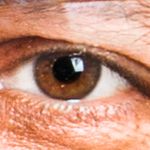 Adobe Community
Adobe Community
- Home
- Lightroom Classic
- Discussions
- Re: What is the best way to process a jpg
- Re: What is the best way to process a jpg
Copy link to clipboard
Copied
When traveling I often find myself shooting with an iPhone, which only produce jpg's. I also have some very old photos that only exist as jpg's. When a picture is processed in Lightroom, I know that it is not modified until I actually export the file with the adjustments. Is there some way to extract the data in the jpg so that we can approximate a raw file? What would converting a jpg to dng do?
Will LR Mobile treat a jpg the same way as LR CC? What I mean is that the original will not be modified?
Thanks,
Daisy
 1 Correct answer
1 Correct answer
Point of clarification:
I can modify a jpg in LR as much as I want. If I need to regenerate a jpg, I should convert to a tiff file first then generate the new jpg? What is the added value of the tiff file?
Daisy
Copy link to clipboard
Copied
daisyg30458525 schrieb
Is there some way to extract the data in the jpg so that we can approximate a raw file? What would converting a jpg to dng do?
There's no way, because jpeg is a compressed format and there a lot of picture informations are lost. This can't be restored.
The converting form jpg to dng makes no sense. The picture informations that are lost in jpgs and will be lost.
Axel
Copy link to clipboard
Copied
Yes: an imported JPG file is worked FROM, rather than worked ON - in Mobile the same, as on the desktop.
Approximating a Raw file: that depends on how you have taken the picture. You may want to set the JPG settings for reduced contrastiness and avoid using any special effects or filters.. To get the highlights etc which are most conducive to being adjusted.
And in low light, with JPG you pretty much have to make the shot either "about" the highlights, or the shadows, each at the expense of the other. For stationary scenes consider exposure bracketing and also try out the HDR options supplied - some phones' HDR feature allow you to keep the component shots as well as a combined image that the phone itself has processed. Remarkably good results can sometimes be got from exposure-fusing or blending multiple original JPGs - that will need to be done on the desktop, in due course. But if an in-phone HDR gives a better immediate basis for further work, so much the more convenient.
Copy link to clipboard
Copied
A RAW file as captured by the camera's sensor (because that's what a raw file is: minimally modified data from the sensor) cannot be reconstructed. The in-camera treatment tries to output a finished file to be used as this. The decisions by the algorithm are destructive. And then you have the JPEG compression which reduces the data literally to the absolute minimum. This treatment is again irreversible.
All this is OK for a final image, but not optimal for images that still need to be modified. You have to live with those restrictions as long as you do not get access to the raw data file.
Now the best method to work JPEG images in LR is to keep them JPEG and to work whatever you want to do and live with the JPEG restrictions (especially compression artefacts). As LR is nondestructive, you can adopt this workflow without regrets. As soon as you need to transfer your file to Photoshop, continue working with a TIFF file. Just avoid JPEG iterations as the JPEG induced error accumulates with each iteration.
Copy link to clipboard
Copied
Point of clarification:
I can modify a jpg in LR as much as I want. If I need to regenerate a jpg, I should convert to a tiff file first then generate the new jpg? What is the added value of the tiff file?
Daisy
Copy link to clipboard
Copied
No need to pass through a tiff file to export your edited file. The way LR works, modifications are only applied when exporting. All edits are stored in a database and do not modify the original file.
A Tiff is only recommended when passing through a program like Photoshop or Nik Photocollection. The reason for this is that JPEG artifacts areadding up from generation to generation.
Copy link to clipboard
Copied
Will LR Mobile treat a jpg the same way as LR CC? What I mean is that the original will not be modified?
Lightroom does not modify your original photos. It doesn't matter if they are JPG or RAW, and it doesn't matter if you are using LR CC or LR Mobile.
Copy link to clipboard
Copied
I tried converting some jpg' to ding already. How do I go back to the original jpg?
Thanks everyone. Very helpful.
Daisy
Copy link to clipboard
Copied
There is no need to go back because there is no harm done! It's just not needed initially to edit your pictures and get the best possible quality out of it. 😉
I suppose the JPEG is simply boxed inside the DNG container. The file size between the original JPEG and the DNG file should not change dramatically (vs a TIFF conversion).
You may look into this older thread: Convert jpg to dng

